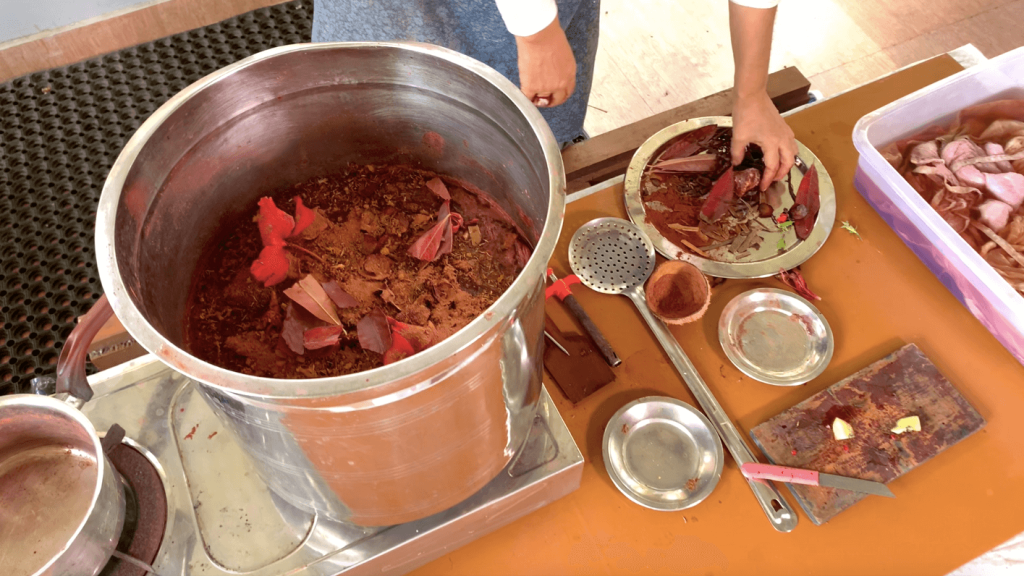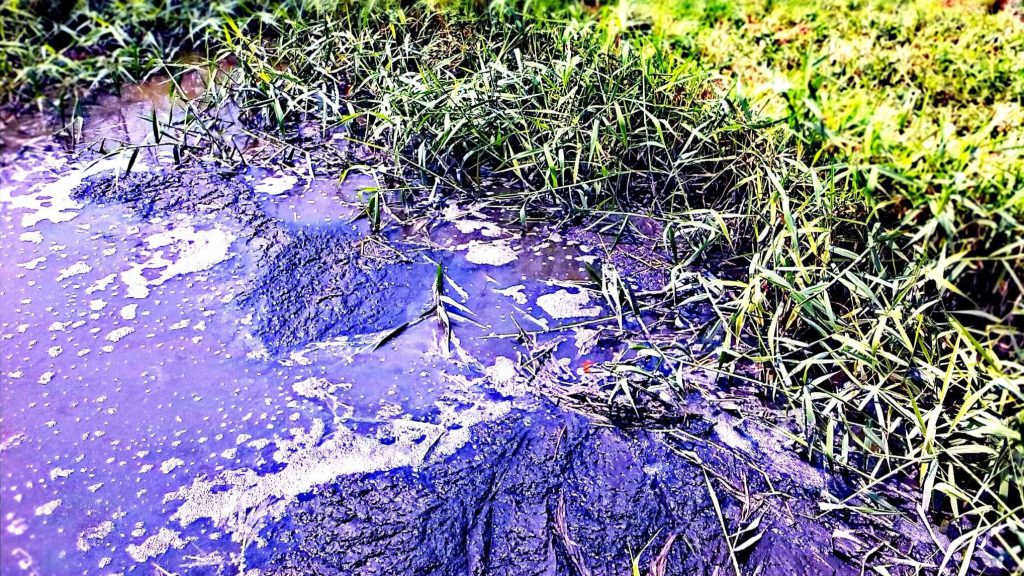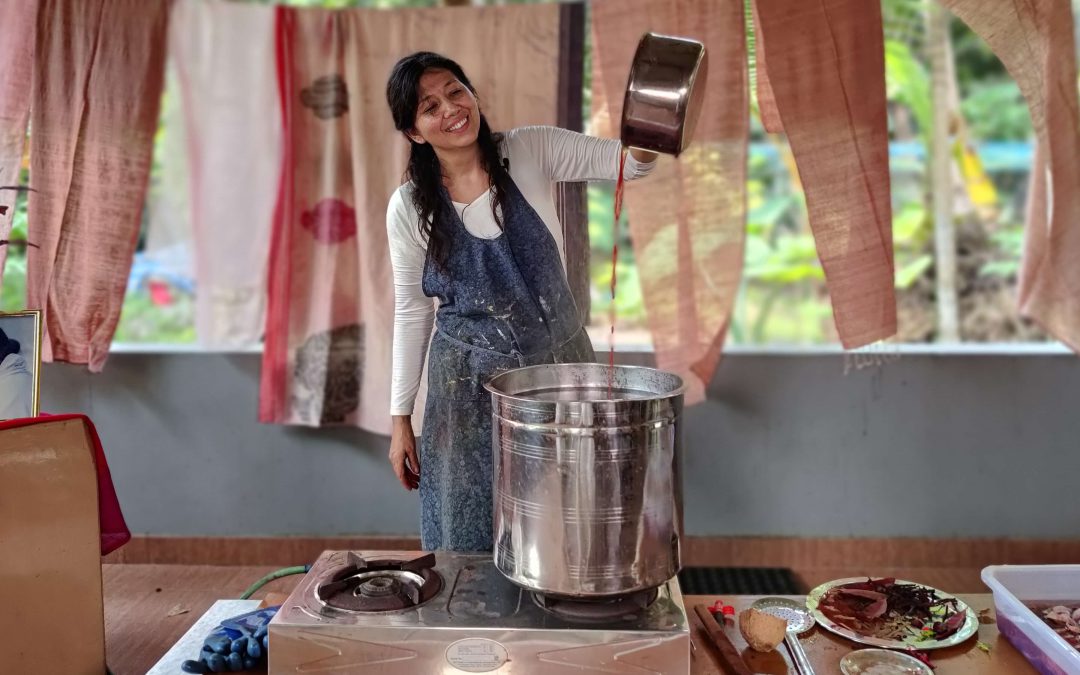The skin is the largest organ of the human body, protecting us from the outside world and eliminating toxins from the body. We also absorb external substances through our skin. So what if the clothing we wear, which touches the skin all day, could help us feel healthy, well, and balanced? Can cloth carry medicinal properties? Did you know this is possible through the practice of Ayurvastra, an ancient spiritual science of dyeing textiles with medicinal herbs?
Ayurvastra is a Sanskrit term. “Ayur” means health and “vastra” means cloth, so the term translates to “healthy cloth.” This is a branch of Ayurveda (the science of life and longevity) stretching back 5,000 years.
Medicinal clothing as a means to protect and heal is a practice described in the Rigveda, a sacred Hindu text first composed in written form around 1,500 BC. Various Ayurvedic works state that even 100 years ago, many people in various parts of India were still practicing natural dyeing, repeatedly dipping their clothing in herb-based washes. In some parts of South India such as Kerala (where Amma’s ashram is), Ayurvedic, herbal-dyed cloths are still used to carry a newborn child. These special cloths have antibacterial qualities.

The creation of Ayurvastra clothing is precisely controlled. One hundred percent organic cotton is hand-loomed with no processing or additives. The fibers must be biodegradable and spun with no chemical finishes. To create subtle, yet beautiful colors, the all-natural cotton or yarn is bleached with a cow urine-based preparation which has great medicinal value. After the fabric is dried in direct sunlight, a gumming substance is applied, which contains extracts of plants such as aloe vera and camphor. The fabric is then cooked for several hours in “kashaya,” a concoction containing up to 60 medicinal herbs, plants, flowers, roots, barks and oils, all specifically selected for their wellness benefits. The fabric is left to dry for three days and then cured for 15 days, allowing the kashaya to settle into the fabric. It is then washed and dried in the shade and allowed to mature for another 15 days. The entire process is organic and environmentally friendly.
Traditionally, people used herbal-dyed cloths to boost immunity, and also to treat specific illnesses like arthritis, skin disorders, and diabetes. For diabetes, the herbal dye might include the “touch-me-not” flower, cumin seeds, champa flowers, and shoe flowers. An herbal dye for arthritis would be prepared with curry leaves; for skin diseases, turmeric, neem, and sandalwood would be combined to create the dye.
Ayurvastra differs significantly from modern textile dyeing — which is typically only for color, with no thought of medicinal value and no concern for the environmental damages created by the dyeing process. In fact, it is estimated that 20% of global clean water pollution comes from dyeing and finishing during textile production.
Ayurvastra differs from modern dyeing because in today’s age we dye for the color, but here in Ayurvastra they treat the garment for the wellness benefits, not so much to obtain a specific color.

By contrast, Ayurvastra not only benefits humanity, it is in every way honoring nature. This beautiful art form, embedded in the rich culture of India, is a practice of living harmoniously with the environment.
We hope you can join us in The Art of Natural Plant Dyeing course, offered with love from Amrita Virtual Academy. It was filmed from our special Saraswati garden in Amritapuri where we do natural plant dyeing year-round.
The course is on-demand, so you can join now and enjoy the materials self-paced. To learn more or to enroll, please visit:
https://courses.amritavirtualacademy.com/courses/natural-plant-dyeing
